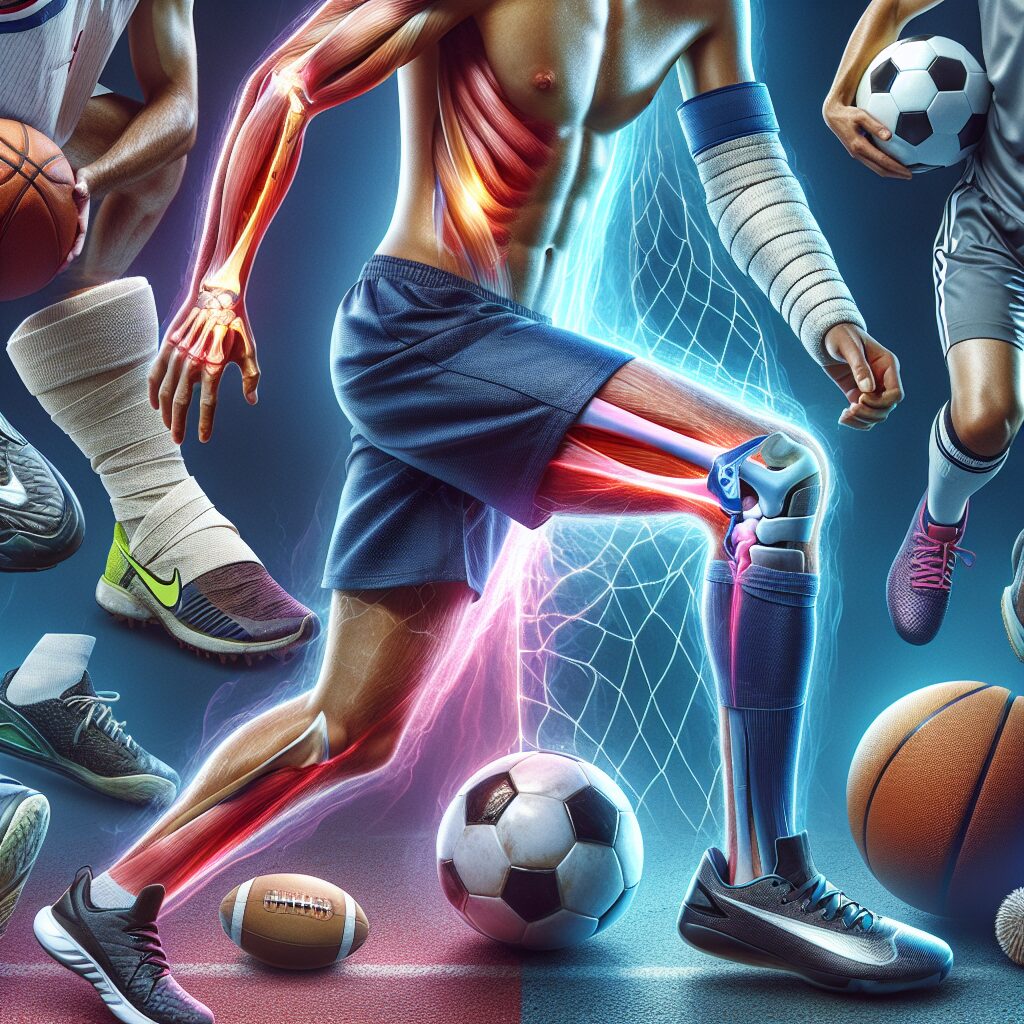Sports-Specific Injury Risks: Understanding the Dangers
As athletes push their bodies to the limit, participating in sports comes with its fair share of potential hazards. One of the key factors to consider is the heightened risk of sports-specific injuries. These injuries are unique to particular sports and can have severe consequences for athletes, hindering their performance and long-term well-being. It is essential to understand the specific impacts and features that make these injuries distinct from general sports injuries.
Sports-specific injury risks can vary widely depending on the nature of the sport. For example, contact sports like football or rugby have a higher likelihood of trauma-related injuries such as concussions, fractures, or sprains. On the other hand, repetitive motion sports like tennis or baseball can lead to overuse injuries like rotator cuff strains or tennis elbow. By recognizing these unique injury patterns, athletes and coaches can take proactive measures to minimize the risks and promote safer sports practices.
Moving forward, this article will delve into the key takeaways that will help shed light on sports-specific injury risks. We will explore the importance of proper training techniques, the role of protective equipment, and the significance of rest and recovery in preventing these injuries. By gaining a deeper understanding of the dangers associated with sports-specific injuries, athletes and sports enthusiasts can enhance their performance while safeguarding their long-term health.
Key Takeaways
1. Different sports come with different injury risks: Understanding the particular injury risks associated with each sport is crucial for athletes, coaches, and medical professionals. Factors such as contact, repetitive movements, and the type of playing surface can significantly influence the types and severity of injuries.
2. Adequate preparation and conditioning are vital: Consistent and effective training programs that focus on strength, flexibility, and endurance can help reduce the likelihood of sports-related injuries. Proper warm-up and cool-down routines, along with balanced nutrition and sufficient rest, play a crucial role in preventing injuries.
3. Technique and form matter: Employing proper technique and form in sports can have a significant impact on injury prevention. Correct body alignment, proper footwork, and adopting safe strategies to tackle opponents or perform specific movements are essential for minimizing injury risk.
4. Injury prevention goes beyond physical preparation: While physical readiness is crucial, addressing mental and emotional aspects is equally important. Techniques such as visual imagery, stress reduction, and resilience training can enhance an athlete’s performance and reduce the risk of injury by improving focus, decision-making, and reaction times.
5. Recognize the importance of rehabilitation and recovery: Despite preventive measures, injuries can still occur. It is crucial to promptly seek appropriate medical attention and follow rehabilitation protocols to ensure optimal recovery. Employing rest, targeting specific exercises, and gradually returning to full activity can facilitate a safe and efficient recovery process.
SEO Optimized Article Title Question: What Are the Dangers of Sports-Specific Injury Risks?
Understanding Sports-Specific Injury Risks
Sports-specific injuries are a common concern for athletes and individuals engaging in physical activities. These injuries can vary based on the type of sport or activity involved, but they all pose potential dangers to participants. By comprehending the risks associated with specific sports, athletes can take precautionary measures to minimize their chances of getting injured.
1. Identifying Common Sports-Specific Injuries
Each sport has its unique set of injury risks. Understanding these risks is crucial in preventing potential injuries. For example, contact sports such as football or rugby involve a higher risk of joint sprains, fractures, and concussions. On the other hand, sports like tennis or golf can lead to repetitive motion injuries like tennis elbow or golfers’ wrist. Identifying the most prevalent injuries associated with a particular sport is crucial for athletes to take informed measures.
2. Causes of Sports-Specific Injuries
Sports-related injuries can arise from various factors. Overuse, poor training techniques, inadequate warm-ups, improper equipment, and lack of proper conditioning are some primary causes. In addition, factors like playing surfaces, weather conditions, and competitive pressures may contribute to injuries. By understanding the underlying causes, athletes can modify their training routines, seek professional guidance, and implement preventive strategies to avoid or minimize the risks.
3. Impact of Sports-Specific Injuries
Sports-related injuries can have a significant impact on an athlete’s physical health and overall well-being. Depending on the severity of the injury, athletes may experience pain, limited mobility, decreased performance, and psychological distress. Furthermore, injuries can lead to prolonged recovery periods, affecting an athlete’s training schedule and potential competition participation. It is essential to acknowledge the potential consequences of injuries to emphasize the importance of injury prevention.
4. Preventive Measures for Sports-Specific Injuries
Preventing sports-specific injuries requires a proactive approach. The following measures can help athletes reduce their injury risks:
- Proper Conditioning: Engage in regular cardiovascular exercise, strength training, and flexibility exercises to improve overall fitness and reduce the risk of injuries.
- Expert Guidance: Seek guidance from experienced coaches and trainers who can provide proper technique instructions and design individualized training programs.
- Warm-up and Stretching: Prioritize warm-up routines before every practice or game, and perform appropriate stretching exercises to prepare the body for physical activities.
- Equipment and Safety Measures: Use appropriate protective gear, maintain equipment regularly, and adhere to safety guidelines specific to the sport.
- Listen to Your Body: Pay attention to signals of fatigue, pain, or discomfort. Rest and seek medical attention when necessary to prevent worsening of injuries.
5. Seeking Professional Medical Advice
If you’re an athlete or participate in sports regularly, consulting with a sports medicine professional can provide valuable insights and guidance. They can assess your individual vulnerabilities, provide injury prevention strategies, and offer rehabilitation plans to ensure proper recovery from any existing injuries. Remember, early intervention and professional help can make a significant difference in managing sports-specific injury risks.
Frequently Asked Questions
1. What are sports-specific injury risks?
Sports-specific injury risks refer to the potential dangers and injuries that are specific to certain sports activities. These risks vary depending on the type of sport and can range from sprained ankles in basketball to concussions in football.
2. How can I prevent sports-specific injuries?
Preventing sports-specific injuries involves several strategies such as proper training and conditioning, wearing appropriate protective gear, maintaining good form and technique, and warming up adequately before engaging in physical activity.
3. Are sports-specific injuries common?
Yes, sports-specific injuries are quite common, especially among athletes who participate in high-impact sports or those that involve repetitive motions. However, the risk and frequency of these injuries can vary based on the sport and individual factors.
4. What are the most common sports-specific injuries?
The most common sports-specific injuries include sprains, strains, fractures, dislocations, and repetitive motion injuries like tendonitis. Additionally, head injuries or concussions are prevalent in contact sports such as football or hockey.
5. Can sports-specific injuries be career-ending?
Yes, sports-specific injuries have the potential to be career-ending, depending on the severity and nature of the injury. Injuries that require prolonged recovery periods or lead to long-term physical impairments may significantly impact an athlete’s ability to continue their career.
6. How important is proper training to reduce sports-specific injuries?
Proper training is crucial in reducing the risk of sports-specific injuries. Adequate conditioning, strengthening exercises, and practicing technique under the guidance of a qualified coach can help improve performance and minimize the chances of injuries.
7. Can sports-specific injuries be prevented at the amateur level?
Yes, sports-specific injuries can be prevented at the amateur level through various measures. These include ensuring proper supervision and coaching, following safety guidelines, using appropriate equipment, and gradually increasing the intensity and duration of training.
8. Is it necessary to consult a medical professional for sports-specific injuries?
It is always advisable to consult a medical professional for sports-specific injuries, especially if the injury is severe or persistent. They can provide an accurate diagnosis, recommend appropriate treatment, and guide the rehabilitation process, ensuring a safe and speedy recovery.
9. Can warming up help prevent sports-specific injuries?
Yes, warming up before participating in any sports activity is crucial in preventing injuries. It helps increase blood flow to the muscles, loosen joints, and improve flexibility, reducing the chances of strains, sprains, and other sports-specific injuries.
10. Are there any long-term consequences of sports-specific injuries?
Yes, sports-specific injuries can have long-term consequences, especially if not properly treated or rehabilitated. Some injuries may lead to chronic pain, limited mobility, or increased susceptibility to future injuries, potentially affecting an individual’s overall quality of life.
Final Thoughts
The understanding of sports-specific injury risks is essential for both athletes and sports enthusiasts alike. By being aware of these risks, individuals can take proactive measures to prevent injuries, prioritize safety, and enjoy sports activities to the fullest.
It is crucial to remember that while sports bring joy, camaraderie, and physical fitness, the associated risks should not be overlooked. Through education, proper training, and a focus on injury prevention, individuals can maintain their physical well-being and continue participating in sports they love, minimizing the potential dangers that may arise.




